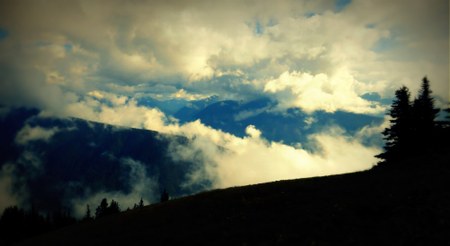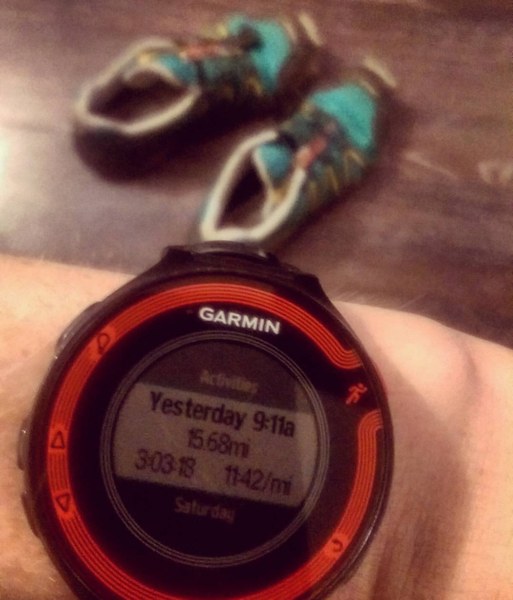
“Fear of the dark, fear of the dark. I have a constant fear that something’s always near. Fear of the dark, fear of the dark. I have a phobia that someone’s always there” -Iron Maiden. From songs, to poems and stories, to cultural teachings, people have an interesting relationship with the night. In general, as the days get shorter, so do most of our outdoor activities-if we continue them at all. So how does one continue to hit the trails despite, or perhaps because of, the lack of light? The following are a few tips and tricks that keep me and, hopefully, will inspire you, to be outside all year round.
Planning
If nighttime running is something you haven’t done a lot of, start out slow and on trails you’re familiar with. It’s often better to plan a shorter route than usual and then run it multiple times, if necessary. Spotting/reading maps or signage or even seeing the turn you were supposed to take can get a little more challenging in the dark, so account for that. Remember that it’s not the end of the world or any need to panic if missed, you might just end up taking a ‘scenic side route’ that you weren’t planning on and will have to do some backtracking.
In addition, be prepared for the change of temperature – but not overly so. Depending on your location and the weather conditions running at night can range from being surprisingly warmer to tens of degrees colder than a run in full sun (especially on trails). It’s important to take this into account in choosing your gear and making your pre/post-run plans. You’ll still be running, so chances are that you’ll probably be warm while moving, but there will be no sunny spot to take a rest in and warming up beforehand may be especially important for you.
Finally, check things like: the access to your trail after dusk and whether there may be any safety concerns. Many parks/trails close one of their access points after darkness falls or may see differing populations depending on the time of day.
Lighting
There are a variety of different opinions here, but, in general, if you’d like the optimal light experience possible think about carrying one fixed light (like a chest or headlamp which will be mostly illuminating the path directly in front of you) and one handheld flashlight (bicycle lights are often a good high lumen option and allow you to easily direct light wherever you need it most).
When you’re running, lumens or the brightness of the light, really count. You’re going to be dedicating more mental capacity to evaluating/planning where you’ll be putting your feet and your pace will probably be slower than average. More light adds further details to the terrain and the colors of what’s around you taking a little bit of the mental guesswork out of your run.
Also, though not exactly light-related, for those of us with glasses: running at night is probably not where you want to first try running without your prescription. From past trail running experience, you’re probably familiar with the fact that shadows dampen colors and make details less evident; no need to add further effort to your run.
Gear
Good news: you probably aren’t going to need to worry about sun protection. Other than this, however, your nighttime runs might take a bit more thought than your usual jaunt – at least for the first couple times. Besides good lighting, a couple of other items might become more essential to your runs. Most will revolve around being aware of the temperatures and weather paired with the terrain and staying visible.

Depending on whether you’re going to be interacting with any urban elements (roads, parking lots, or even sidewalks to some degree) staying visible via reflective strips or light clothing may be crucial to staying safe. Even if your interaction with hazards like vehicles would be minimal, it might be kind to make yourself more visible to any other trail visitors as a matter of courtesy.
The hazards of terrain at night are the same as during the day; you now just might not see or register them as quickly. Because of this, appropriate gear like footwear with good traction, clothing as protection from brush, or even a billed cap or clear glasses to protect your face, are or could be important. Especially on trails you aren’t as familiar with or after brush/branch changing weather patterns, try to be ready for the unexpected.
There’s one piece of gear that’s recommend to do without: music. Of your five senses you’ve only got two that are much help running. As your vision is going to be slightly impaired, it pays to be able to hear sounds ranging from another person enjoying the outdoors to which way the road is. Not to mention, if you’re forced to come into contact with something dangerous like the wild automobile, you really want to make sure you can figure out where it’s coming from.
Trail courtesy
First, another emphasis on making yourself known before running up/past another human (or animal, for that matter). People are unobservant enough in the daylight – no need to give them or their animals additional excuses to startle at night. This can be additionally important as the occasional party will have several people or animals sharing a single light; it pays to know where everyone is.
Next, while you’re passing these folks, remember your light. Specifically: remember not to shine it directly at them/in their eyes. We instinctly like to see what or who we’re talking to, but your fellow trail mates would probably appreciate more an aura of mystery than you ruining their night vision. This is especially important to those with head or chest lights. Trail running: probably the only time you shouldn’t really look at the person you’re speaking to.
Bottom line
Just because the sun goes to sleep, doesn’t mean you need to. Especially in our long winter months, don’t let the lack of light keep you from getting time outdoors. A little more planning required, but well worth the effort-get on the trails today!
Any tips to add or stories of what works best for you? Please leave a comment below!
In addition, are you interested in trying your hand at or in getting some practice in winter, evening running? Join us, the Foothills Trail Running Branch, for our first running activity! Our ‘No Buts Night Run’ paired with REI donates $1 to the American Hiking Society for every person who pledges to run! Get ready to kick up your heels, dash down some paths, and howl at the moon with fantastic folks on the wonderful Tiger Mountain!
Interested in becoming a trail run leader for The Mountaineers? Fill out a leader application and sign up for a trail run leader seminar
 Samantha Sanders
Samantha Sanders